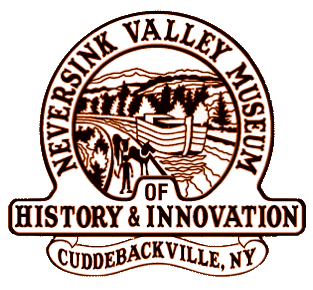Hudson River Brick Makers
Conventional wisdom has it that the D&H Canal’s main role was to carry anthracite coal from the Pennsylvania coalfields to the Hudson River for shipment to New York City. However, in reality the canal has a much more interesting and complex life than to simply transport city-bound coal.
True enough, the D&H Canal Company was formed with the central goal of supplying New York City with coal from the Wurts brothers’ Carbondale mines. Nevertheless, during its heyday in the 1860’s and ’70’s less than half the coal that left their coalfields ever made it to New York City. 1870, the year of the greatest production of coal from Carbondale is a good example. Of 2.2 million tons of coal sold by the D&H only 1 million ever arrived at Roundout on the Hudson. In fact, more coal was shipped on the Delaware & Raritan and Morris Canals in New Jersey to New York Harbor in the ’60’s and ’70’s than ever arrived from the D&H Canal.
Of the coal that did reach Roundout, not all of it was delivered to New York City. Some was bound for other cities on the Hudson from Albany down past Kingston and Newburgh to Yonkers. Still more coal was transshipped on oceangoing barges around Cape Cod to Boston and northern New England. Other coal was destined for the Hudson Valley brickworks. While coal was not the predominant fuel in the brick kilns it did have a much more important role to play in brick making there.
In 1828 the D&H Canal opened for business. One year later in 1829 James Wood introduced a revolutionary practice into the production of Hudson River bricks. In that year Wood patented the use of crushed coal as a new ingredient in the brick clay mixture. This innovation had the result of reducing the brick firing time as well as fuel consumption by half. Since the Hudson River clay deposits were the most extensive in America, James Wood’s invention helped set the stage for the valley to become one of the largest brick manufacturing centers in the world.
The remarkable practice that James Wood introduced in Haverstraw quickly spread throughout the Hudson River brick industry. The result was to make it possible for this industry to meet the growing demand for bricks for New York City. Brick had been an important building material in the New York area almost from the very beginning. Use was further increased owing to the Great Fires of 1835 and 1845. As a result of these disasters, the use of wood declined and fire resistance regulations eventually were extended throughout the city mandating brick or stone common walls between attached buildings. Brick was also used in water tunnels and sewer lines and for the sidewalks of New York. In fact, it would not be an exaggeration to call New York the brick city.
In 1860 there were almost 100 brickyards in the Hudson River Valley. The explosive growth of New York City fueled the expansion of the brick industry. Each season the industry turned out over 500 million bricks. According to James Wood’s formula, 22.5 tons of coal was used per 450,000 bricks. This means that the Hudson River brick makers used over 20,000 tons of coal annually. While this is only a small fraction of the D&H coal delivered to Roundout, its importance in building New York was enormous.
While the coal delivered to New York City to heat its homes and places of business far exceeded the volume of coal delivered to the Hudson River brick yards, the importance of the coal used to make bricks is far more significant than the coal used for heating. New York City had other, cheaper suppliers for its heating coal while the brick makers of the Hudson River valley relied to a large extent on the D&H coal which was less expensive than other sources.
To learn more about the fascinating story of brick making in the Hudson River valley The Great Hudson River Brick Industry by George V. Hutton is an invaluable resource. The book should be available at local libraries or can be ordered through the Museum bookstore. Most of the material for this article about Hudson River brick manufacturing comes from this wonderful book. The Haverstraw Brick Museum in Haverstraw New York also has worthwhile exhibits on the Hudson River brick industry.
Copyright 2005 by Stephen Skye
Short Link:
